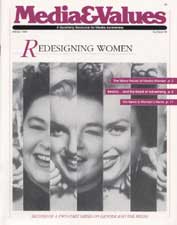When Women Talk to Women, HerStory is Finally Told
|
This article originally appeared in Issue# 49
|
My grandmother, who raised five children in a small Virginia mountain town as a storekeeper's wife, who chopped chickens' heads off with skill and plucked them pretty clean, made the papers only when she died. Nobody thought to ask her about the changes she had seen in rural America.
My mother, who grew up crossing New River on a small ferry boat to go to school, who became the first in her family to finish college, and who was fired from her teaching job because she got married, carries in her mind a first-person view of Depression-era Washington, where she worked for the Rural Electrification Administration filing papers that told the story of a changing America. Yet she too rarely made the papers. (Although her work on a fashion-therapy project for just-released mental patients was covered after the evolution of the kind of project I'm talking about.)
Special to me, these women were not unique individuals by any means, and they were not much different from thousands of other people whose names appear in our big-city newspapers only when they are born, marry and die - if then. They didn't run for office, and they weren't stars. Along with me, the journalist, they represent women's transition from generation to generation in the 20th century. Their stories are the stuff of social history books now. No reporter would have looked at them twice decades ago.
Because of this blind spot, the press missed the beginnings of the women's movement. Neither The New York Times, The Washington Post nor The Washington Star considered that Betty Friedan's book, The Feminine Mystique, required reviewing in 1963. They were living it.
There has been no conspiracy to change newspaper coverage. Simply put, the presence of more women covering stories has led to more women being interviewed. Many men see only men as subjects for quotation, while women, who are used to listening to both men and women, interview both men and women as a matter of course.
Changes in the definition of attitudes and the definition of news also would not have occurred without the employment of more and more wives of more and more of these men. When a male publisher has a working wife and a three-year-old, that makes a difference.



